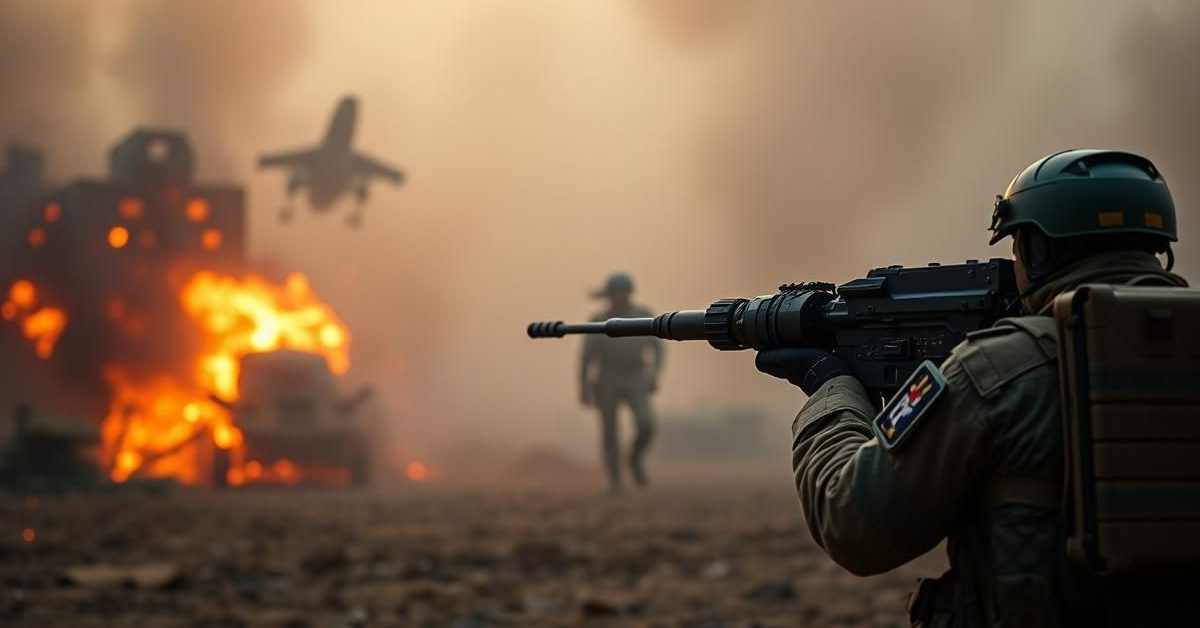Artificial intelligence is rapidly reshaping the battlefield, making nations like China global leaders in AI-driven warfare, while energy emerges as a critical factor in this new era.
China’s “Intelligentised Warfare”
China’s People’s Liberation Army (PLA) has already begun deploying AI across its warfighting functions under the banner of “intelligentised warfare.” They are taking a measured approach, initially applying AI to enhance battlefield equipment performance.
This includes improving artillery accuracy and reducing shot intervals. Generative AI is also being integrated with military drones for precise, automatic targeting of enemy radars. Recent advances in models like DeepSeek could further boost China’s military AI capabilities.
India’s Concerns and Regional Dynamics
These developments pose a significant concern for India, especially given China’s active assistance to Pakistan’s Center of Artificial Intelligence and Computing (CAIC) within the Pakistan Air Force, established in 2020.
Pakistan’s CAIC has an elaborate Cognitive Electronic Warfare program, aiming to use AI and machine learning for better tactical decision-making. During Operation Sindoor, Pakistan might have leveraged live satellite updates from China, with data crunching enabling real-time awareness of vectors.
The Multi-Domain Challenge
Modern warfare demands the analysis of vast data volumes from multiple domains: land, air, sea, space, and cyberspace. Lieutenant General Rahul R Singh emphasized the critical role of C4ISR (Command, Control, Communications, Computers, Intelligence, Surveillance, and Reconnaissance) and the need for civil-military fusion.
Harnessing this data with AI is crucial for deciphering enemy movements and devising effective deterrence strategies. While China leads in virtual domains like the electromagnetic spectrum, space, and cyberspace, India has considerable ground to cover.
Energy: The Unsung Hero of AI Warfare
The extensive use of AI, including big data analysis, machine learning, and predictive analysis, demands immense energy. These technologies require vast spinning reserves of grid power, necessitating new electricity sources to support massive data centers.
Countries are increasingly looking to nuclear energy, particularly Small Modular Reactors (SMRs), to meet these demands. Kris P. Singh, CEO of Holtec International, highlighted that India’s current nuclear capacity is insufficient for future AI-driven defense needs.
He advocated for placing SMRs next to data centers to power missile systems, drones, smart soldiers, and robots. This investment in energy infrastructure is vital for underpinning a nation’s future defense posture.
India’s AI Initiatives and Future Outlook
India’s defense establishment was an early adopter, with the Defence Research and Development Organisation’s (DRDO) Centre for Artificial Intelligence and Robotics (CAIR) established in 1986. CAIR focuses on autonomous technologies for combat, path planning, and target identification.
While CAIR shows progress, China’s burgeoning AI prowess combined with its willingness to aid Pakistan’s military AI capabilities presents a challenge. The landscape of warfare is shifting towards “agentic warfare,” where autonomous intelligent systems perform complex tasks.
These new AI systems will allow technologically advanced forces to outmaneuver opponents by rapidly processing data and proposing tactical moves. Real-world examples include Ukraine’s AI-equipped drones targeting Russian refineries and Israel’s “Lavender” AI system for identifying targets in Gaza.
The current conflict between Israel and Hamas has even been dubbed the first “AI war,” underscoring the rapid adoption of this technology.
- China is deploying AI for “intelligentised warfare,” enhancing military equipment and drones.
- India is concerned by China’s AI advancements and its collaboration with Pakistan’s military AI programs.
- Future warfare requires advanced C4ISR and multi-domain data analysis, where AI is crucial.
- Powering AI-driven defense requires vast energy, with nuclear power, particularly SMRs, seen as a key solution.
- “Agentic warfare” signifies a new era where AI agents perform complex military tasks, with examples already seen in global conflicts.
As AI rapidly transforms the battlefield, securing a robust energy backbone is paramount to powering the defense capabilities of the future.














